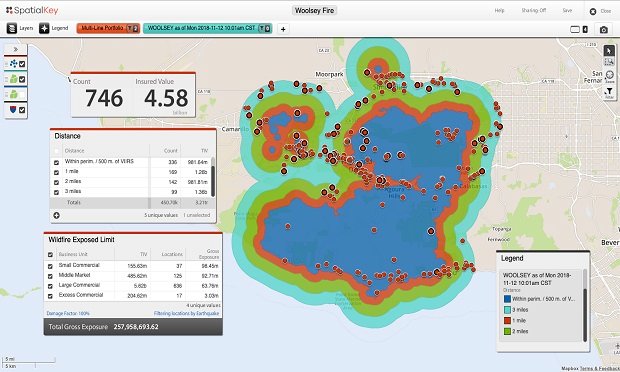Over the past several years, some remarkable enhancements inboth the capture and strategic use of claims information have beenmade. Virtually all claims organizations now have true business intelligence (BI) available toanalyze and use their increasing volumes of data to make informedbusiness decisions. The expertise in using this capability isexpanding at a rapid rate; so much so that the next wave of BIinnovation facilitates making use of that information virtuallyautomatic at the point of decision.
|Past, Present and Future Data
BI uses computer-based technology to capture and providehistorical, current, and future-oriented data. The systems thenturn that raw data into a wealth of analytic, performancemanagement, and predictive information that must be made easy toaccess and configure to successfully leverage the technology. Manycompanies have already implemented a BI system that accomplishesthis, but instituting such a program often requiresvarying degrees of time-consuming data and design manipulationbefore an actionable product is delivered into the right hands.
Also, much of the focus on initiating BI programs has occurredat a higher level than litigation management, and has involved theintroduction of a reporting warehouse that integrates data fromclaims, policy, e-invoicing, and other systems within theorganization. Where BI has been successful in generating savingsand efficiencies within a litigation and spend management program,the BI tool has three essential elements: a matter managementapplication, an e-invoicing application, and a reportingapplication, the last of which is capable of fully integrating andcombining all three.
|What makes these three applications soimportant to BI is their ability to work together seamlessly asone. System integration has certainly been a significant challengein the past, but the greater challenge today is delivery of thedata in ways that are meaningful, easily accessible, andconfigurable by a disparate set of professionals ranging fromclaims representatives to executives.
|Claims Management with BI
Gone are the days when management reports were comprised mainly ofsegmented outcome reports that were manually distributed on paper.Instead, claims management information is now deliveredelectronically at anytime, anywhere, and is composed of infinitelymore useful information.
The source of current BI technology starts with the rich segmentationcapabilities of the matter level information accessed from a mattermanagement system. The ability to dissect and analyze minuteinformation at the invoice level provides additional focusedinformation; however, it is the fusion of that information withmatter management level information that makes BI so powerful forclaims departments.
|Relative to matter management information, BIallows the prioritization of that information so that identifyingwhat types of matters are driving inventory is easy. As a result,organizations are able to focus on creating strategies andprocesses to address those matters generating the most activity. BIalso supports measurement of those strategies and processes to makecertain that the claims organization is complying with them, andthat the applied processes are actually delivering the anticipatedresults.
|Relative to invoice-related information, BI makes possible theanalyses of drivers of cost, as well as prioritization anddevelopment of cost management disciplines. Beyond that capability,BI assures that claims organizations have paid and pending costinformation on matters at their fingertips. Any matters that havenot been billed can be identified, those generating extraordinaryexpense can be highlighted, and groups of matters showingextraordinary growth in cost can be segmented and targeted forspecial attention. The full capability of BI is unveiled when thedepth of matter information is combined with the depth of invoiceinformation, because not only are areas ripe for improvement easilytargeted, but what needs to be done, where, and with whom is alsoimmediately accessible.
|For example, if a typical BI analysis identifies a growth inboth matter count and cost in any particular matter type, the BItool can dissect that growth by matter sub-type, location, lawfirm, and so on. Because all results are caused by people'sactions, the invoice information is harvested to identify who isdoing what, how often, with what level of resources, for whatperiods of time, and when. That information can be trended overtime to see what, if any, change has occurred surrounding thoseprocesses. Even more importantly, that information can be comparedacross law firms and personnel to determine what differences areoccurring as a result of varying approaches taken by firms andindividuals in the handling of those matters. The invoiceinformation allows complete transparency into the drivers of costand for absolute identification of the individual or individualsresponsible, resulting in the ability to change or leveragespecific resources and activities.
|Identifying BestPractices
With the current power of BI, there are many aspects of any matterthat can be identified, including the best practices, mostappropriate levels of personnel, best performing lawyers, and mostuseful types of activities. Meaningful strategies can be overlainon various levels to assure that what is perceived as the bestpractices are communicated. Just as importantly, BI can then beused to generate reports to determine if those strategies andprocesses are being followed and if they are not, to identify whois violating procedure. Finally, BI can be used to track resultsagainst history so as to determine how effective new processes andstrategies are in improving performance.
While all of that information is available and can shift thefocus on improved performance, BI also makes the dissemination ofthat information accessible for all levels of management. Thetechnology not only identifies areas of focus as it supportsdevelopment and implementation of processes, but it also drivesthose processes to spread across the organization through itscommunications capabilities.
|Results, comparative performance, progress against objectives,and additional analyses can be electronically distributed as oftenas is necessary, even several times a day where appropriate. Thelevel of information disseminated can be adjusted per recipient sothat senior management is focused on pertinent segments ofinformation, and individual claims professionals receiveinformation relevant to their priorities. Dashboard information,tailored differently for senior, middle, and matter levelmanagement, can be created so as to focus the organization onspecific areas of performance and provide instant interpretation ofthe presented data. All of those capabilities are available now,and claims organizations are always developing more sophisticatedtechnical expertise in the use and leverage of those tools.
|InstitutingIntelligence
The focus of ongoing claims BI development is currently centeredaround making use of the data without the need for the claimsprofessionals to interpret or even be completely familiar with theunderlying information. This work is described as "intelligence ondemand," and includes at least three areas, including workflow,informed decision support, and "what if" analyses. In today'stechnological environment, most organizations are looking tocloud-based solutions to provide lower cost and greater flexibilityto data management and delivery of BI. In the claims world, if thebasic streams of data from claims, litigation management, ande-billing systems can be supplied, cloud solutions can be leveragedto accelerate the use of BI, transforming it into a trueintelligence on demand platform for end users.
The technology incorporates focused, up-to-the-minute data,which makes the intelligence on demand uniquely timely andrelevant. Implementing BI also means that intelligence ondemand can be applied to whichever discrete segmentations areselected. The same rules and logic do not apply to overly broadgroupings of matters. Because the intelligence on demandinformation is not only client specific, but also specific toparticular groups of matters, scenarios, personnel, and actions,integration of these tools require close interaction with claimsmanagement.
|The institution of an "intelligence on demand" approach isparticularly significant in the litigated claims area, where massquantities of detailed information need to be processed andmanipulated at many levels in order to make educated decisions oneverything from individual suit management, to panel and vendormanagement. Within the litigation management lifecycle, forexample, workflow triggers claims management action in a timelyfashion. Based on an understanding of all of the activitiesrequired to properly manage a particular type of claim or suit,intelligence on demand platforms can use historic activities withinthose matter types to identify the optimum time to undertakespecific activities such as confirm responsive pleadings or thelike.
|"What If" Technology
Sophisticated intelligence on demand deployments allow for theinsertion of "on the ground" expert-driven data and variableswithin business operation calculations. This "what if" technologyallows analyses on demand, so as to display any number of scenariosbased on human determination of critical input values, thenprojecting likely outcomes. Informed decision support providesrecommendations for selecting the best resources with which tomanage particular matter types and activities, and can evenrecommend settlement values. The output is based on objective dataspecific to the matter or activity type being analyzed. Such aprocess eliminates the influences of human biases and generalitiesto the greatest extent possible. The data is useful in any numberof ways, from selecting counsel to evaluating ultimate exposure.
BI is widely available for all claims organizations, many ofwhich are utilizing it in a disciplined fashion to continuallyanalyze claims costs, and to identify opportunities for performanceimprovement. Building processes and strategies around thoseopportunities is easily accomplished once they are identified, asis building metrics to identify compliance and results. Ongoingperformance and result metrics are also easy to develop within theBI tool and can be disseminated throughout the organization onwhatever schedule is desired. Any format, from grid reports todashboards, can be delivered at the appropriate level ofspecificity. Once both BI and intelligence on demand areimplemented in claims organizations, resources and focus can bespent on defining the right guides and performance indicators foreach area within claims and litigation management, extending thecompetitive advantage.
|Anecdotal Evidence of ReducedLitigation Costs with BI
Now that forward-looking claims organizations have begun tointegrate their claims management with e-billing and reportingsystems to capture detailed performance information, they can beginanalyzing and leveraging this data to both gain greater controlover their litigated cases and cut costs.
LAW FIRM SUCCESS RATES
Claims organizations can compare metrics including cycle times,resource assignments, budgets, and outcomes. This analysis allowscases to be segmented appropriately and directed to firms that haveproven to be the best at handling particular issues.
Example #1:
Using its integrated platform, one organization was able to analyzebilling and outcomes related to specific cases in a particularjurisdiction during a three-year period. Its goal was to determinewhich firms were providing the best overall results and why. Itused BI tools to first identify the top performers by reviewingstaffing profiles, billing practices, time allocations, casedurations, and other metrics. The results of its researchdetermined that the best results were achieved by firms who had ahigh degree of partner engagement early on and resolved matterswithin the first six months. This analysis gave the company greaterinsight into their top performers and provided guidance for futurematter strategy and planning.
BUDGETING AND FORECASTING
Routine reporting and transparency adds credibility as theorganization proactively identifies and defuses potentiallyproblematic cases and invoices.
Example #2:
During a recent annual budget review, a large law department wasusing the data it had captured in its integrated platform toprepare the CEO for what its proposed budget would be for the nextyear. Historically, this had been a lengthy meeting with manyquestions and few answers about the current spending patterns andhow the budget would be allocated in the coming year. By analyzingits billing data, the team was able to quickly put the budgetproposal into terms the CEO could relate to, resulting in fewerquestions, a quick meeting and an approved budget.
BILLING DATA AND CASE OUTCOMES
Inaccurate billing can be easily identified by individual oraggregate invoice review. Detailed billing information thatsuggests extraordinary costs can be easily identified, as cangroups of cases or activities that can be better handled byalternate resources or processes.
Example #3:
After putting an integrated business intelligence platform inplace, one organization recognized that a law firm was chargingreasonable rates, but had the worst per-case cost in itsjurisdiction. An analysis of billing data uncovered the causes —unit billing, redundancies, and excessive entries for individualline items — indicating that the firm may have been more interestedin generating fees than in matter resolution. Further comparison ofsimilar cases across different firms determined that the firm inquestion was also attaining the worst case outcomes. Uncoveringthese results enabled the department to take informed action.
Organizations have found that putting an integrated spendmanagement system in place can save from five to 15 percent inlegal fees solely by pre-screening invoices for accuracy andcompliance with performance guidelines. As they learn to capitalizeon the data-driven business intelligence solutions, theseorganizations have been able to drive savings of as much as 50percent by making fully informed and data-driven decisions.
Want to continue reading?
Become a Free PropertyCasualty360 Digital Reader
Your access to unlimited PropertyCasualty360 content isn’t changing.
Once you are an ALM digital member, you’ll receive:
- All PropertyCasualty360.com news coverage, best practices, and in-depth analysis.
- Educational webcasts, resources from industry leaders, and informative newsletters.
- Other award-winning websites including BenefitsPRO.com and ThinkAdvisor.com.
Already have an account? Sign In
© 2024 ALM Global, LLC, All Rights Reserved. Request academic re-use from www.copyright.com. All other uses, submit a request to [email protected]. For more information visit Asset & Logo Licensing.








